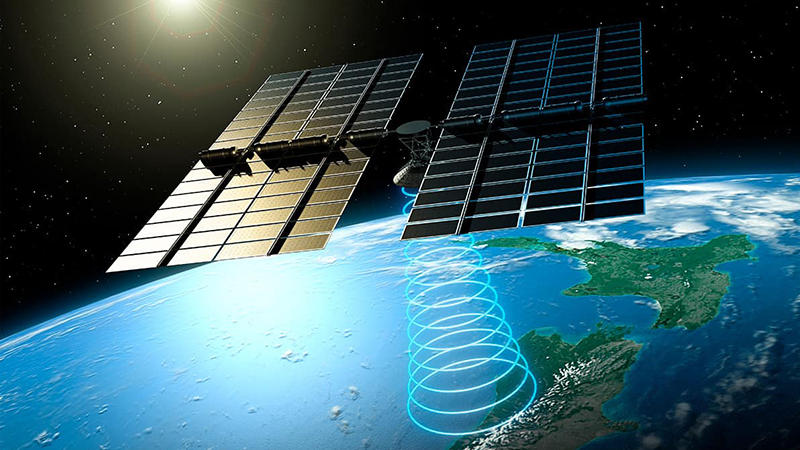

In our push for reduced dependence on fossil fuels, we’re looking for ever more innovative solutions for generating power. One such example is space-based solar power. Of course, no system is without its potential drawbacks, but are these outweighed by the benefits?
The name is fairly self-explanatory: space-based solar power means capturing solar energy in space, on solar panels, and then beaming it to receiving antennae on Earth. The physics behind it is well understood, as it relies on power collection and beaming concepts.
Put simply, solar panels fitted to GEO satellites collect solar energy. This is then converted to radio frequency energy at an efficiency of 85% before it’s beamed to a receiving ground antenna. From there, the RF energy is converted into direct current electricity and delivered to the national grid.
According to the Space Energy Initiative, each satellite would be capable of capturing 3.4GW of solar energy. Based on an efficiency of 85%, it would beam a net 2.9GW to Earth, which ends up being 2GW of AC power in the national grid.
Although still in the development phase, various tests have proven the viability of this technology. In 2015, Mitsubishi Heavy Industries transmitted 10kW of power across 500m, and Japan Aerospace Exploration Agency managed a similar feat in the same year. However, there are some limitations still holding us back.
The most obvious benefit of capturing solar energy in space is that it’s always “day”. Provided we keep the mirrors pointed at the sun, they can collect energy 24/7, putting them well ahead of ground-based panel arrays. Similarly, the lack of atmospheric obstruction means more efficient energy capture.
Using beam-based energy transfer could also allow us to redirect it to areas most in need. Provided there’s a receiving station nearby, energy could be directed on demand across the country based on peak loads. This would give the power grid far more flexibility to cope with demand.
Finally, there’s reduced land interference. While many of us have little problem with the appearance of solar panel arrays, there’s no denying that they require ground space. To some extent, there will always be some kind of disruption to plants and wildlife as a result.
On the other hand, the concept of space-based solar capture has several obstacles we must overcome. First is the size of the satellites, which are estimated to have solar panels more than 1km across. A similar issue is the cost to launch a satellite, which couldn’t exceed $200 per kg (which is equivalent to £161.07) if it’s to be competitive in the energy market
Then there’s the issue of the Airy disc phenomenon. Based on this, ground stations for a 1km satellite would need to be more than 10km in size! This is based on the planned beam frequency of 2.45GHz and its related spread.
We must also consider our ability to maintain solar panels. On Earth, this is a simple job. However, GEO orbit isn’t especially safe for astronauts, meaning our only option would be robotic repairs. Space debris is a hazard, and finding a viable way to repair satellites would be a must.
Despite these current hurdles, the idea of space-based solar energy capture is entirely viable. Although it’s still in its early stages, capturing such intense solar energy could revolutionise the way we use energy and the Earth-based solutions we employ.